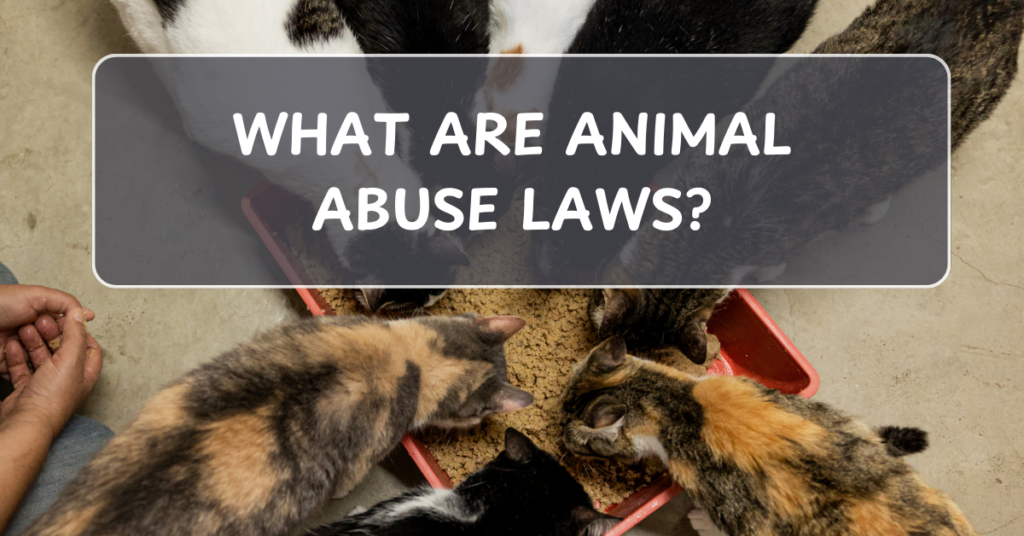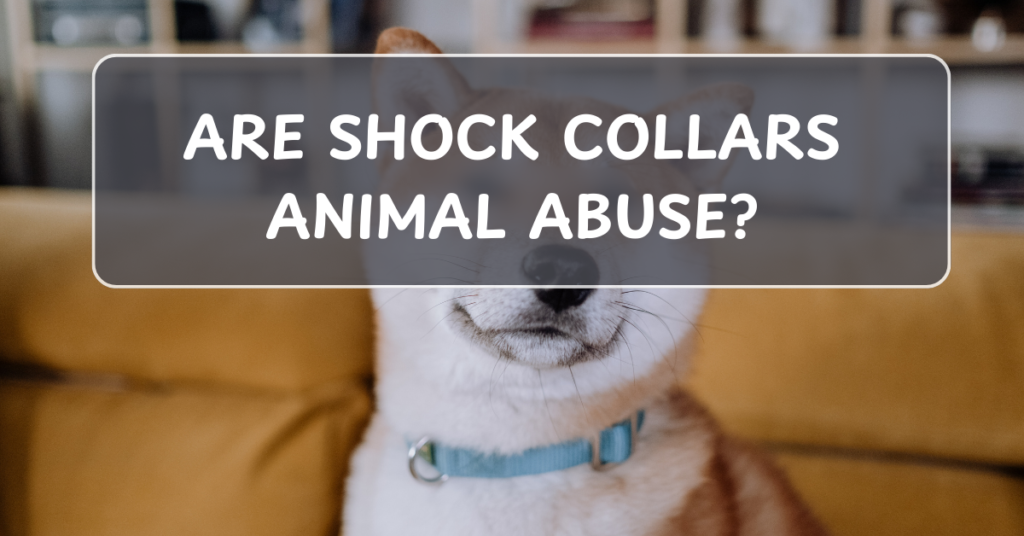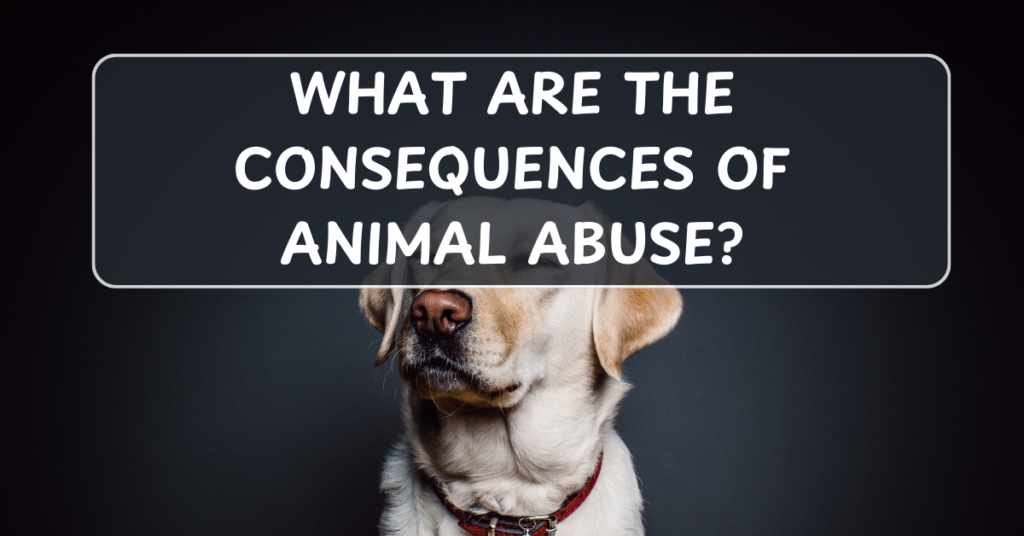
Animal abuse laws are legal protections and regulations designed to prevent the mistreatment, cruelty, and neglect of animals. These laws vary from country to country and even between states or provinces within a country, but they generally serve the same purpose: to protect animals from harm and ensure they are treated with dignity and respect.
1. Types of Animal Abuse Covered by Laws
Animal abuse laws typically cover a range of actions that cause harm to animals, including:
- Physical Abuse: This includes hitting, beating, kicking, or otherwise inflicting physical injury or pain on an animal.
- Neglect: Failing to provide an animal with adequate food, water, shelter, or medical care, leading to suffering or harm.
- Torture: Deliberate actions designed to cause extreme pain or suffering to an animal.
- Sexual Abuse: Any sexual contact or behavior involving animals.
- Abandonment: Leaving an animal without proper care or supervision, especially in dangerous or harmful conditions.
- Animal Fighting: Involvement in or facilitation of animal fighting, such as dog fighting or cockfighting, is illegal in many places.
- Hoarding: Keeping an excessive number of animals without the ability to properly care for them, resulting in the animals’ suffering.
2. Categories of Animal Abuse Laws
Animal abuse laws can be categorized into different types based on the level of abuse, the type of animal, and the penalty for breaking the law.
a. Criminal Animal Abuse Laws
Criminal animal abuse laws are designed to punish those who intentionally harm or neglect animals. These laws can be broken down into:
- Felony Abuse: In many jurisdictions, severe cases of animal abuse, such as prolonged torture or killing, are classified as felonies. A conviction for felony abuse can result in significant penalties, including prison time and fines.
- Misdemeanor Abuse: Less severe cases of animal abuse, such as neglect or first-time offenses, may be classified as misdemeanors. These offenses may still carry penalties such as fines, community service, or short-term imprisonment.
b. Animal Cruelty Laws
Animal cruelty laws address acts that cause harm or distress to animals and are typically divided into two categories:
- Active Cruelty: This refers to direct actions that cause harm to an animal, such as hitting or kicking the animal.
- Passive Cruelty: This refers to neglect or failure to provide adequate care, such as not feeding, watering, or providing medical care for an animal.
c. Animal Protection Laws
Some laws are specifically focused on the protection and welfare of animals, ensuring they are not abused in ways that lead to suffering. These laws typically cover areas like:
- Standards of Care: These laws set the basic requirements for how animals should be treated in terms of shelter, food, and medical care.
- Animal Welfare Regulations: These rules govern the conditions in which animals can be used in various industries, including farming, research, and entertainment, ensuring humane treatment.
3. Key Elements of Animal Abuse Laws
While specific laws differ, most animal abuse laws include the following key elements:
- Intentionality: The abuse must be intentional, meaning the perpetrator knowingly and willfully harms or neglects an animal. In some cases, negligence may be sufficient for prosecution, especially if it results in significant harm or suffering to the animal.
- Severity of Harm: The law typically distinguishes between minor mistreatment and severe cruelty. Minor neglect, such as failing to provide adequate shelter, may be treated differently from extreme torture or killing.
- Types of Animals Protected: Animal abuse laws may specify which animals are protected, with some laws extending protections to all animals, while others focus on pets, farm animals, or endangered species.
- Penalties and Sentencing: Penalties for breaking animal abuse laws can vary greatly, ranging from fines and mandatory counseling to imprisonment, depending on the severity of the crime.
4. Examples of Animal Abuse Laws
Here are some examples of prominent animal abuse laws in different countries and regions:
United States
- Animal Welfare Act (AWA): The AWA is a federal law that regulates the treatment of animals in research, exhibitions, and transport. It sets standards for care, housing, and treatment.
- State-Specific Laws: Many states in the U.S. have their own laws regarding animal cruelty, with penalties that can range from fines to imprisonment. For example, California’s “Penal Code 597” criminalizes animal cruelty, while New York’s “Agriculture and Markets Law” defines the minimum standards of care for animals.
- Preventing Animal Fighting: Federal laws such as the Animal Fighting Prohibition Enforcement Act make it illegal to participate in, promote, or be involved in animal fighting, such as dog fighting or cockfighting.
United Kingdom
- Animal Welfare Act 2006: This law provides the framework for preventing cruelty to animals in England and Wales, including the duty of care for owners to meet an animal’s basic needs. The law also criminalizes intentional harm, neglect, and failure to provide care.
Canada
- Criminal Code of Canada – Section 445: This section makes it an offense to cause unnecessary pain, suffering, or injury to animals. Those convicted of animal cruelty can face fines and imprisonment.
European Union
- EU Animal Welfare Regulations: The EU has various regulations governing animal protection, including laws that govern the transport, treatment, and slaughter of animals, as well as protections for animals used in research.
5. Reporting Animal Abuse
To ensure that animal abuse laws are enforced, reporting mechanisms are essential. Individuals who witness or suspect animal abuse can report it to local animal control, law enforcement, or animal welfare organizations. Many organizations also provide hotlines for anonymous tips.
6. Challenges in Enforcement
Despite the existence of these laws, enforcing animal abuse laws can be challenging due to:
- Lack of Resources: Many animal protection agencies or local law enforcement may lack the resources to investigate all reported cases of abuse thoroughly.
- Public Awareness: In some regions, there is still a lack of awareness about animal rights and the severity of animal abuse, which can hinder reporting and prosecution.
- Differences in Laws: Laws regarding animal abuse vary widely, and in some regions, animal cruelty may not be as heavily prosecuted or treated with the same seriousness as other crimes.
Conclusion
Animal abuse laws are crucial for protecting animals from harm and ensuring their well-being. These laws cover a broad range of actions, from physical cruelty to neglect and exploitation. While there are differences in how animal abuse is defined and penalized across various regions, the overarching goal of these laws is to promote humane treatment and prevent harm to animals. Enforcement of these laws remains a challenge, but increased awareness and reporting can help ensure that animal abusers are held accountable for their actions.


